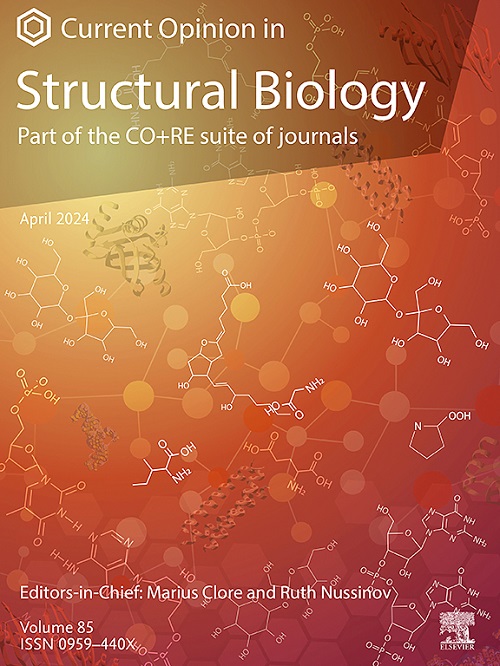Major advances in protein function assignment by remote homolog detection with protein language models – A review
IF 6.1
2区 生物学
Q1 BIOCHEMISTRY & MOLECULAR BIOLOGY
引用次数: 0
Abstract
There is an ever-increasing need for accurate and efficient methods to identify protein homologs. Traditionally, sequence similarity-based methods have dominated protein homolog identification for function identification, but these struggle when the sequence identity between the pairs is low. Recently, transformer architecture-based deep learning methods have achieved breakthrough performances in many fields. One type of model that uses transformer architecture is the protein language model (pLM). Here, we describe methods that use pLMs for protein homolog identification intended for function identification and describe their strengths and weaknesses. Several important ideas emerge, such as filtering the substitution matrix generated from embeddings, selecting specific pLM layers for specific purposes, compressing the embeddings, and dividing proteins into domains before searching for homologs that improve remote homolog detection accuracy considerably. All of these approaches produce huge numbers of new homologs that can reliably extend the reach of protein relationships for a deeper understanding of evolution and many other problems.

基于蛋白质语言模型的远程同源检测在蛋白质功能定位中的主要进展
人们越来越需要准确有效的方法来鉴定蛋白质同源物。传统上,基于序列相似性的蛋白质同源性鉴定方法在功能鉴定中占主导地位,但当序列之间的同源性较低时,这些方法就会遇到困难。近年来,基于变压器架构的深度学习方法在许多领域取得了突破性的表现。使用转换架构的一种模型是蛋白质语言模型(pLM)。在这里,我们描述了使用plm进行蛋白质同源性鉴定的方法,用于功能鉴定,并描述了它们的优缺点。一些重要的想法出现了,比如过滤由嵌入生成的替代矩阵,为特定目的选择特定的pLM层,压缩嵌入,以及在搜索同源物之前将蛋白质划分为结构域,从而大大提高远程同源检测的准确性。所有这些方法都产生了大量新的同源物,这些同源物可以可靠地扩展蛋白质关系的范围,从而更深入地了解进化和许多其他问题。
本文章由计算机程序翻译,如有差异,请以英文原文为准。
求助全文
约1分钟内获得全文
求助全文
来源期刊

Current opinion in structural biology
生物-生化与分子生物学
CiteScore
12.20
自引率
2.90%
发文量
179
审稿时长
6-12 weeks
期刊介绍:
Current Opinion in Structural Biology (COSB) aims to stimulate scientifically grounded, interdisciplinary, multi-scale debate and exchange of ideas. It contains polished, concise and timely reviews and opinions, with particular emphasis on those articles published in the past two years. In addition to describing recent trends, the authors are encouraged to give their subjective opinion of the topics discussed.
In COSB, we help the reader by providing in a systematic manner:
1. The views of experts on current advances in their field in a clear and readable form.
2. Evaluations of the most interesting papers, annotated by experts, from the great wealth of original publications.
[...]
The subject of Structural Biology is divided into twelve themed sections, each of which is reviewed once a year. Each issue contains two sections, and the amount of space devoted to each section is related to its importance.
-Folding and Binding-
Nucleic acids and their protein complexes-
Macromolecular Machines-
Theory and Simulation-
Sequences and Topology-
New constructs and expression of proteins-
Membranes-
Engineering and Design-
Carbohydrate-protein interactions and glycosylation-
Biophysical and molecular biological methods-
Multi-protein assemblies in signalling-
Catalysis and Regulation
 求助内容:
求助内容: 应助结果提醒方式:
应助结果提醒方式:


